Photo gallery: the US's tragic journey to 200,000 coronavirus deaths
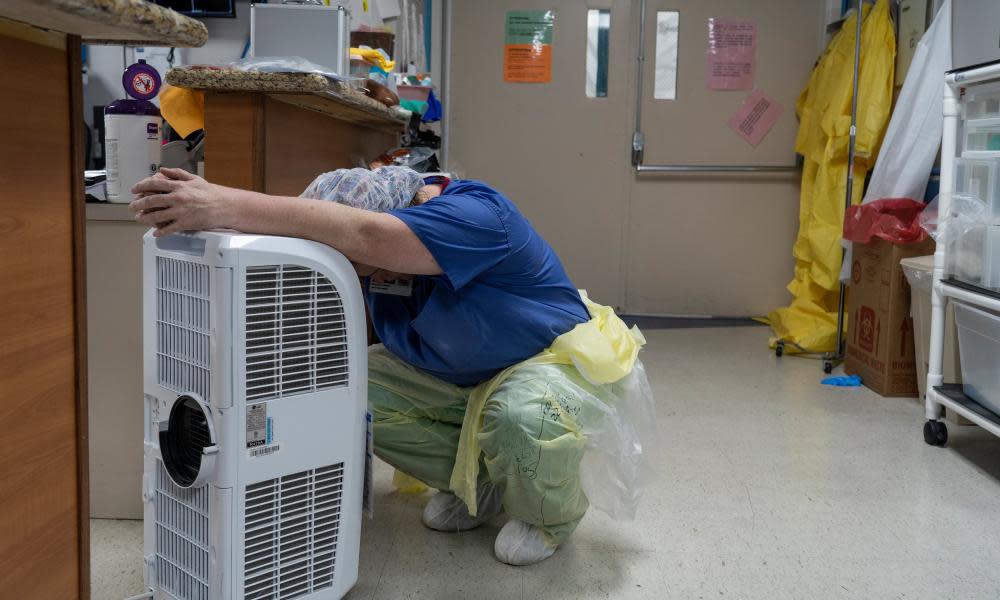
As the US passes another milestone in its loss of life to the pandemic, for some it will be a moment to reflect on how so many lives have been impacted.
Here we have collected images from the months since the US reported its first officially known case.
While the actual first US case will never be known, the first acknowledged diagnosis linked to the virus was a 35-year-old man who lived north of Seattle and had returned from a trip to Wuhan, China, on 20 January; a day later President Trump tells CNBC: “It’s one person coming in from China, and we have it under control.”
In late January the White House creates a taskforce, and, we know now from Bob Woodward’s upcoming book, President Trump knew by at least 7 February that Covid-19 was a serious threat, even as he played down the risks in public.
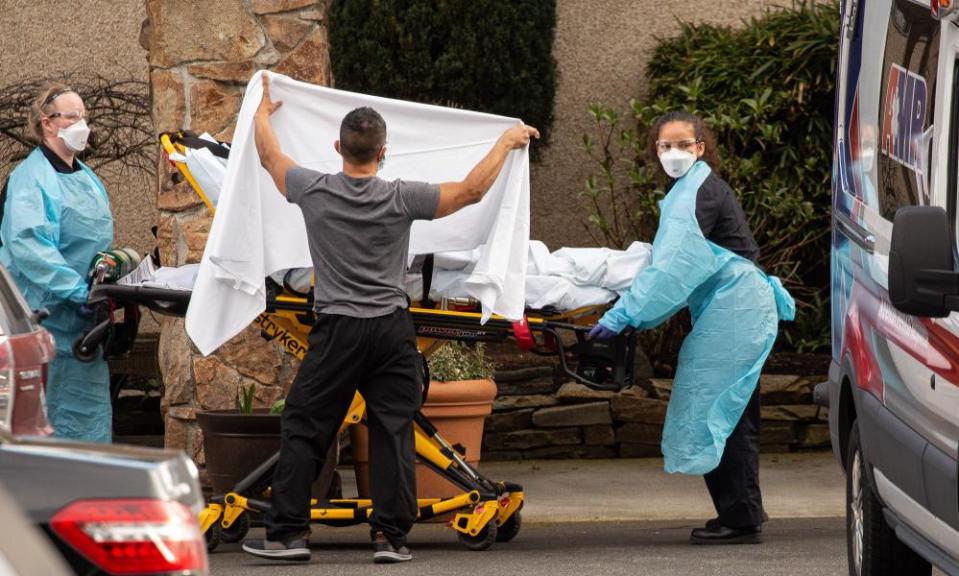
Alex Azar, secretary of health and human services, declares a public health emergency on 31 January, and Trump restricts travel from China, a decision that he later claims, erroneously, saved hundreds of thousands of lives.
In February there is the first known death from Covid-19, in California, though it will not be identified for months. Later in the month the Centers for Disease Control and Prevention (CDC) announces a patient in California has tested positive for Covid-19, the first official case where source of infection is unknown.
The economy goes into freefall; Vice-President Mike Pence is made head of the White House taskforce.
On 27 February Trump says: “It’s going to disappear. One day – it’s like a miracle – it will disappear.”
Related: Lost on the frontline: US healthcare workers who died fighting Covid-19
In early March, Trump signed an $8.3bn aid bill that receives near-unanimous support in Congress. He confuses many by saying anyone who wants a test can get one.
Trump restricts travel from Europe, excluding the UK, though days later, he announces a bar on travel from the UK and Ireland. There are chaotic, crowded scenes at some US airports as Americans rush home.

Broadway closes in New York, and the March Madness basketball tournament is cancelled and the US has more than 1,600 confirmed cases across the country. On 13 March, Trump declares a national emergency.
Lockdowns begin, first in California and then New York, and spread around the country. By 26 March, more than 1,000 deaths are recorded in the US, a figure that doubles in just a couple of days.
Trump, who had been playing down the virus, shifts tone and says “our country is in the midst of a great national trial, unlike any we have ever faced before”.
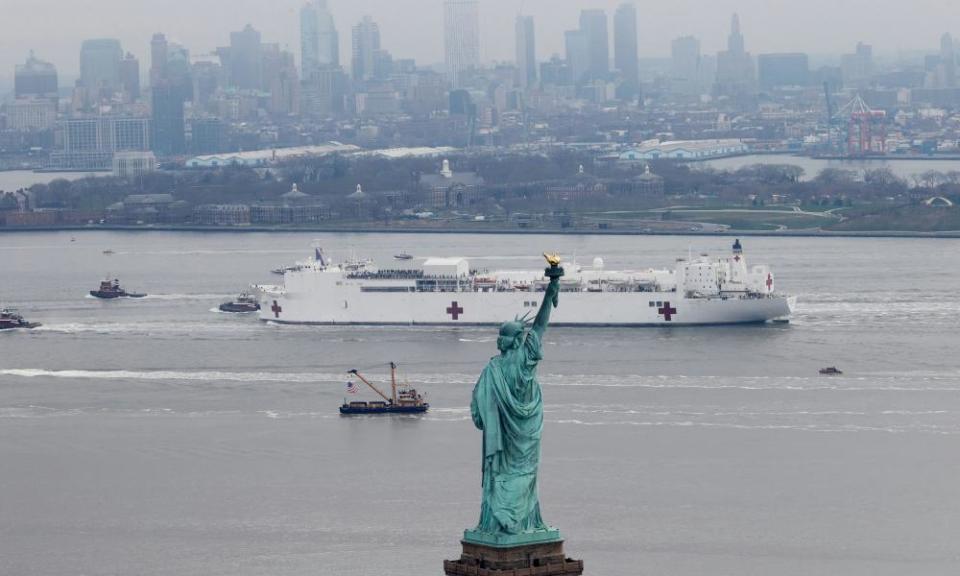
A navy hospital ship arrives in New York city, amid fears its hospitals will not be able to cope with the numbers of patients, though ultimately it is not needed in a significant way. Inside the city’s hospitals stories of heartbreaking loss emerges, where medical staff work up to their capacities to save as many as they can, while struggling in many cases to find enough personal protective equipment.
In early April, the CDC recommends all Americans wear face coverings in public – after weeks of suggesting otherwise. New York’s mayor warns that D-day is looming as hospitals struggle to find personal protective equipment (PPE), ventilators, beds and staff.
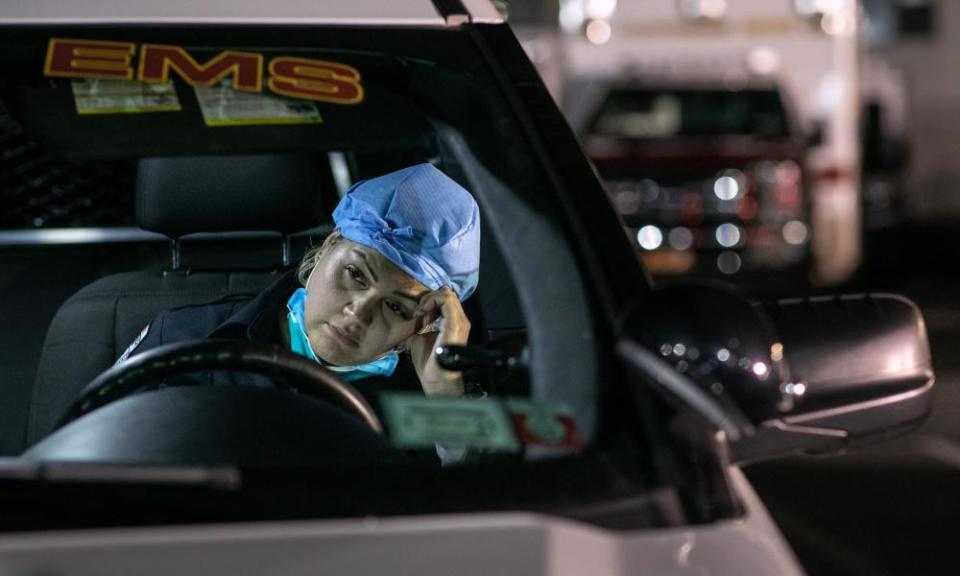
It emerges Black Americans and Latinos are suffering disproportionately, with greater numbers among the deaths. ProPublica was one of the first to detect an alarming racial disparity in death rates with a report in early April that found African Americans dying at an alarming rate from Covid-19. Since then the data has further firmed up, revealing that Black people are dying at between two and three times the rate of white people.
The CDC reverses its guidance on the effect of wearing masks and recommends wearing them.
There are shocking photos of cars waiting in line outside food banks which report a huge surge in demand from residents and families amid widespread job losses across the country.
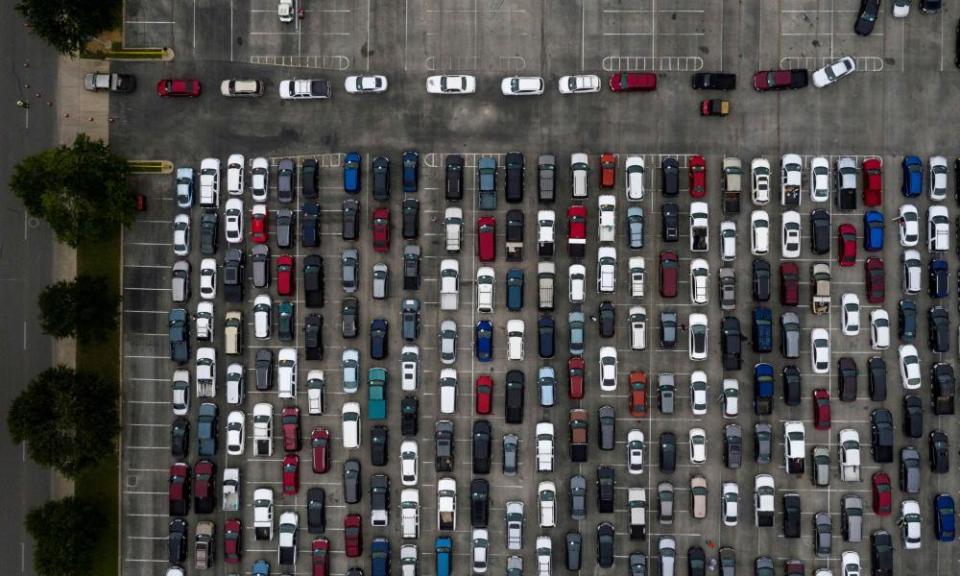
Trump claims total authority over the states, and is quickly challenged by governors.
Two days after thousands of protesters in Michigan gathered to decry their state’s stay-at-home order, Trump tweets to “LIBERATE MINNESOTA”, “LIBERATE MICHIGAN” and “LIBERATE VIRGINIA”.

In April there are as many as 500 deaths a day in New York city, the center of the pandemic in the US.
At a press conference Trump seems to suggest people inject disinfectant to fight the virus, he later says he was being sarcastic. By 28 April, more than 1 million people in the US have tested positive for the virus. .
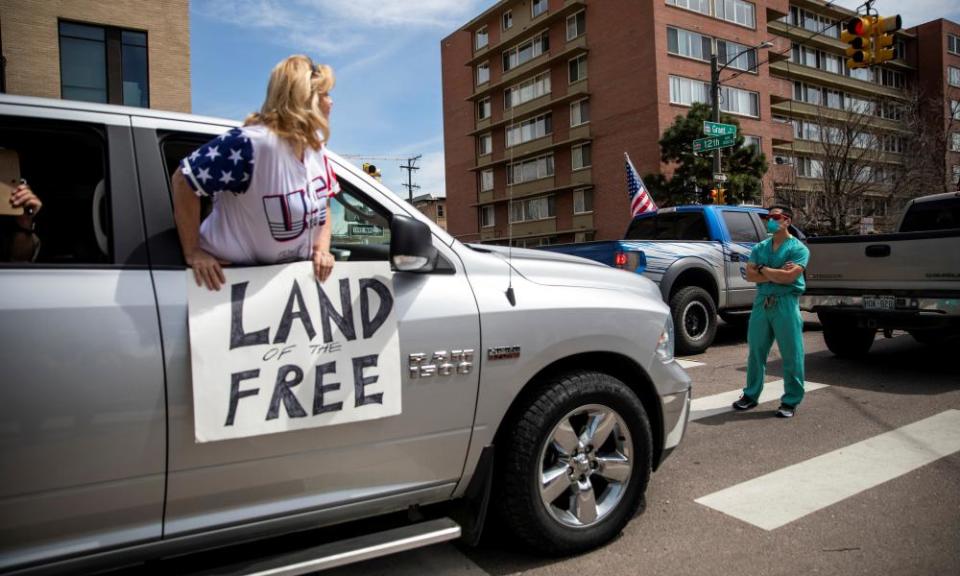
Georgia is the first state to reopen with governor Brian Kemp clashing with the mayor of Atlanta Keisha Lance Bottoms on the issue; President Trump also advises against it.
Protests begin in cities across the country in the wake of the killing of George Floyd, a Black man, in Minneapolis, Minnesota, by a white police officer on 25 May. In the coming weeks, hundreds of thousands of people will protest on the streets for racial justice. Experts fear the turnout will increase cases, though this appears not to happen.
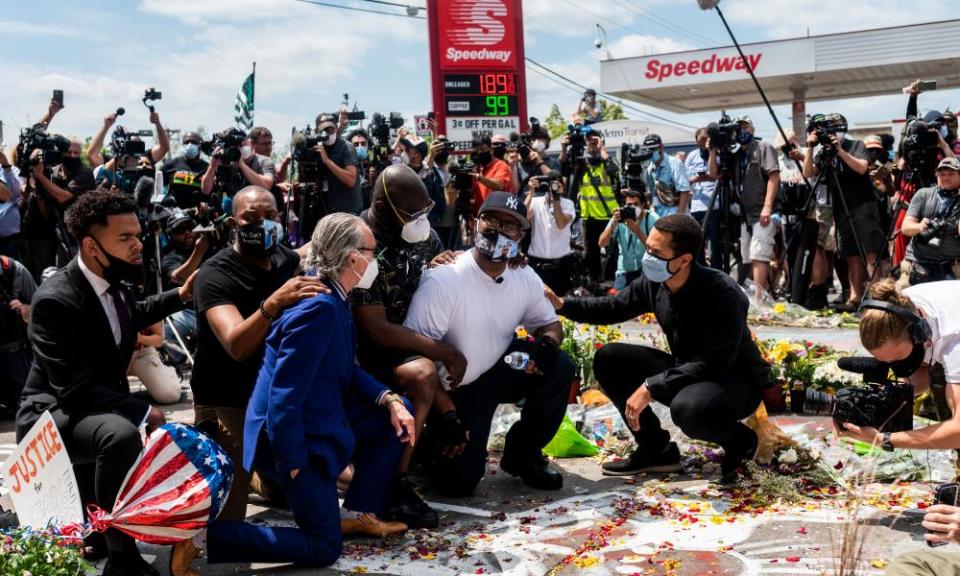
In early May Trump says a growing coronavirus death toll is simply the price that must be paid for reopening the economy. “We have to be warriors,” he tells Fox News.
Despite Trump’s claims the virus is slowing there are new hotspots in Republican heartlands like Texas and Alabama. On 27 May, the US hits 100,000 Covid-19 fatalities.
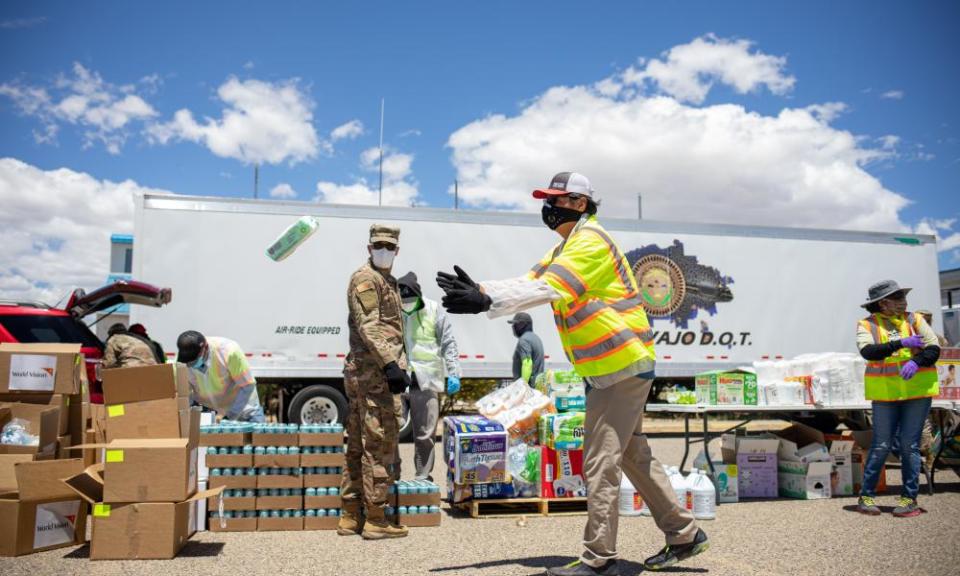
A day later unemployment claims filed during the pandemic pass 40m.
In early June New York begins phased reopening of businesses, deaths are in single digits per day. On 10 June the US hits 2m cases.

Later that month Trump holds a campaign rally in Tulsa, Oklahoma, with underwhelming attendance.

On 24 June, the US records 34,700 Covid-19 cases in a single day, the highest increase in new cases since April, wiping out two months of progress and marking a turning point in new surges of cases as southern and western states begin to see huge increases.
July will be the worst month so far in the US in the pandemic.

Florida breaks the national record for largest daily increase of new Covid-19 cases with 15,299 new infections on 16 July. Just the day before, Disney had reopened its huge park in Florida to visitors.
Later in the month, Trump endorses face masks for the first time as “patriotic”. He is not seen wearing one deliberately in public until 11 July.
The US surpasses 4m confirmed cases on 23 July, and 150,000 deaths on 29 July . By then the US is adding a million cases in 15 days.
Trump cancels the part of the Republican convention that was supposed to be in Jacksonville, Florida, amid soaring cases in the state.
Hundreds pay tribute to civil rights icon John Lewis whose casket was placed outside the Capitol in a change to protocols because of the coronavirus.
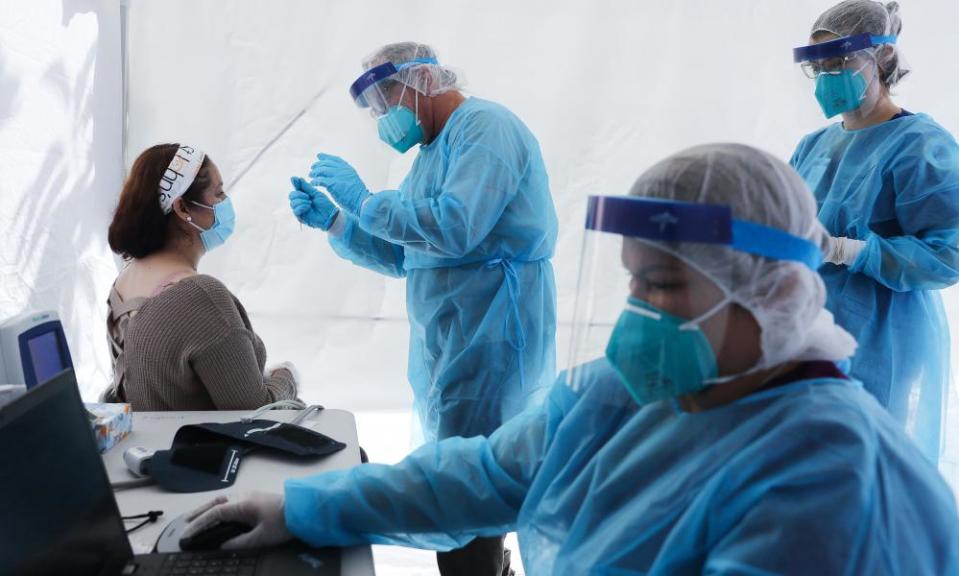
There is heated debate around the country over if and how schools and colleges can reopen for in-person learning.
The New York governor, Andrew Cuomo, announces schools in the city can reopen in the fall if cases remain low.
By 9 August the US passes 5m confirmed coronavirus cases, a quarter of the global tally of 20m. The US has just over 4% of the world’s population.
The Guardian and Kaiser Health News have been counting the cost of Covid-19 among American healthcare workers, and report more than 900 have died battling the pandemic (the figure is now more than 1,150).
Vastly different accounts of the US’s response to the virus are presented at the Democrat and Republican conventions. Joe Biden announces a policy for a national mask mandate policy, if elected president.

By the end of August, US college towns are closing bars as Covid-19 cases surge. The US passes 6m cases by 31 August. Some 20 million people are estimated to be at risk of being evicted after federal programs with protections expire in July.
The House speaker, Nancy Pelosi, says she is the victim of a “set up” after been pictured without a mask inside a hair salon.
On 8 September, the US reports less than 25,000 daily cases for the first time since June. Biden describes Trump’s response to the crisis as “almost criminal”.

White House taskforce expert Anthony Fauci says it will probably take another year before life returns to “normality” in the US even if a successful Covid-19 vaccine in approved in the coming months.
A 28-year-old teacher dies of Covid-19 as schools prepare to return to classrooms.
There are fears of a bleak Covid winter ahead as experts say the coming months are crucial in the fight against the virus.


 Yahoo News
Yahoo News 
